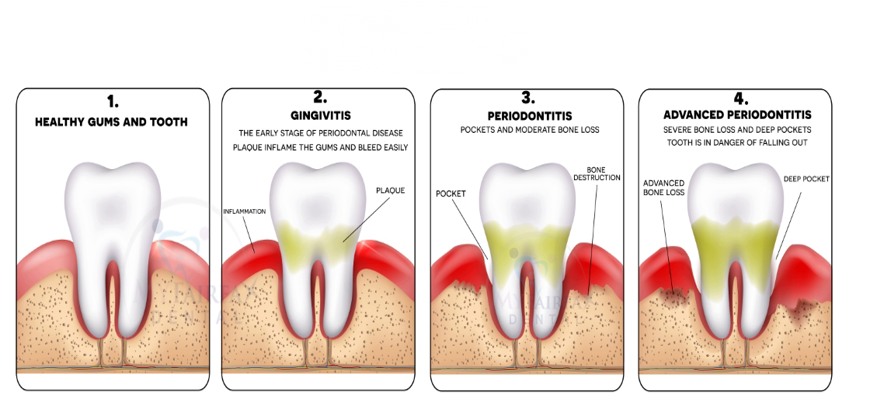Gingivitis

Gingivitis means inflammation of the gums, or gingiva. It commonly occurs because a film of plaque, or bacteria, accumulates on the teeth.
Gingivitis is a non-destructive type of periodontal disease, but untreated gingivitis can progress to periodontitis. This is more serious and can eventually lead to loss of teeth. Signs of gingivitis include red and puffy gums, that bleed easily when the person brushes their teeth.
Gingivitis often resolves with good oral hygiene, such as longer and more frequent brushing, and flossing. In addition, an antiseptic mouthwash may help. In mild cases of gingivitis, patients may not even know they have it, because symptoms are mild. However, the condition should be taken seriously and addressed immediately.
Types of gingivitis
There are two main categories of gingival diseases:
Dental plaque-induced gingival disease: This can be caused by plaque, systemic factors, medications, or malnutrition.
Non-plaque induced gingival lesions: This can be caused by a specific bacterium, virus, or fungus. It might also be caused by genetic factors, systemic conditions (including allergic reactions and certain illnesses), wounds, or reactions to foreign bodies, such as dentures. Sometimes, there is no specific cause.
Causes and symptoms of gingivits
The most common cause of gingivitis is the accumulation of bacterial plaque between and around the teeth. The plaque triggers an immune response, which, in turn, can eventually lead to the destruction of gingival, or gum, tissue. It may also, eventually, lead to further complications, including the loss of teeth.
Dental plaque is a biofilm that accumulates naturally on the teeth. It is usually formed by colonizing bacteria that are trying to stick to the smooth surface of a tooth.
These bacteria might help protect the mouth from the colonization of harmful microorganisms, but dental plaque can also cause tooth decay, and periodontal problems such as gingivitis and chronic periodontitis, a gum infection.
When plaque is not removed adequately, it can harden into calculus, or tartar, at the base of the teeth, near the gums. This has a yellow color. Calculus can only be removed professionally.
Plaque and tartar eventually irritate the gums, causing gum inflammation around the base of the teeth. This means that the gums might easily bleed.
Signs and symptoms of gingivitis might include:
- bright red or purple gums
- tender gums that may be painful to the touch
- bleeding from the gums when brushing or flossing
- halitosis, or bad breath
- inflammation, or swollen gums
- receding gums
- soft gums
You can expect to see improvements after a few days of treatment, but it may take a while for symptoms to go away completely. In most cases, gingivitis usually clears up within 10 to 14 days.
When gingivitis is left untreated, it can worsen over time and impact the integrity of your gums in a serious way. Periodontal disease occurs when plaque from your teeth recedes and begins to grow underneath the gum line. This, in turn, can irritate your gums and cause them to become inflamed.
Look for a mouthwash that’s specifically designed for treating gingivitis, and rinse as directed on package instructions. Typically, rinsing for 30 seconds twice a day (after brushing and flossing) is what’s recommended to help kill bacteria, keep breath fresh and get rid gingivitis.
